Long-term trends in Anopheles gambiae insecticide resistance in Côte d'Ivoire
- PMID: 25429888
- PMCID: PMC4269959
- DOI: 10.1186/s13071-014-0500-z
Long-term trends in Anopheles gambiae insecticide resistance in Côte d'Ivoire
Abstract
Background: Malaria control is heavily dependent on the use of insecticides that target adult mosquito vectors via insecticide treated nets (ITNs) or indoor residual spraying (IRS). Four classes of insecticide are approved for IRS but only pyrethroids are available for ITNs. The rapid rise in insecticide resistance in African malaria vectors has raised alarms about the sustainability of existing malaria control activities. This problem might be particularly acute in Côte d'Ivoire where resistance to all four insecticide classes has recently been recorded. Here we investigate temporal trends in insecticide resistance across the ecological zones of Côte d'Ivoire to determine whether apparent pan-African patterns of increasing resistance are detectable and consistent across insecticides and areas.
Methods: We combined data on insecticide resistance from a literature review, and bioassays conducted on field-caught Anopheles gambiae mosquitoes for the four WHO-approved insecticide classes for ITN/IRS. The data were then mapped using Geographical Information Systems (GIS) and the IR mapper tool to provide spatial and temporal distribution data on insecticide resistance in An. gambiae sensu lato from Côte d'Ivoire between 1993 and 2014.
Results: Bioassay mortality decreased over time for all insecticide classes, though with significant spatiotemporal variation, such that stronger declines were observed in the southern ecological zone for DDT and pyrethroids than in the central zone, but with an apparently opposite effect for the carbamate and organophosphate. Variation in relative abundance of the molecular forms, coupled with dramatic increase in kdr 1014F frequency in M forms (An. coluzzii) seems likely to be a contributory factor to these patterns. Although records of resistance across insecticide classes have become more common, the number of classes tested in studies has also increased, precluding a conclusion that multiple resistance has also increased.
Conclusion: Our analyses attempted synthesis of 22 years of bioassay data from Côte d'Ivoire, and despite a number of caveats and potentially confounding variables, suggest significant but spatially-variable temporal trends in insecticide resistance. In the light of such spatio-temporal dynamics, regular, systematic and spatially-expanded monitoring is warranted to provide accurate information on insecticide resistance for control programme management.
Figures
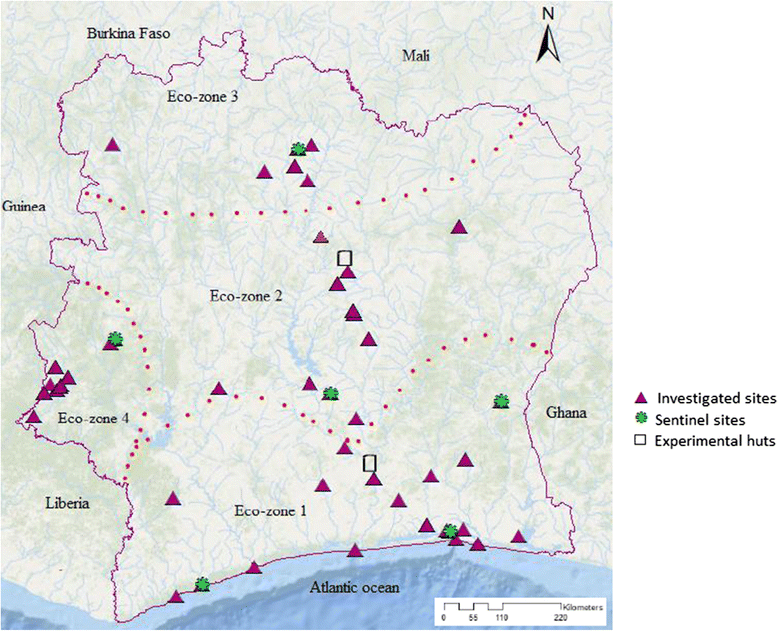
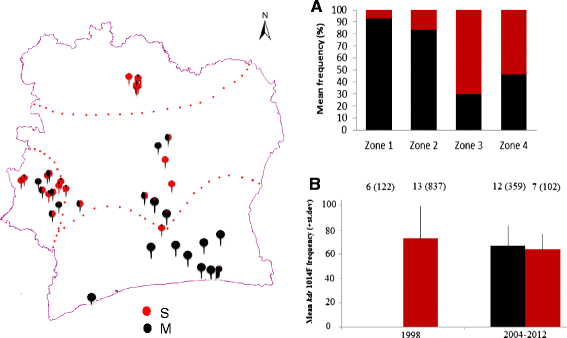
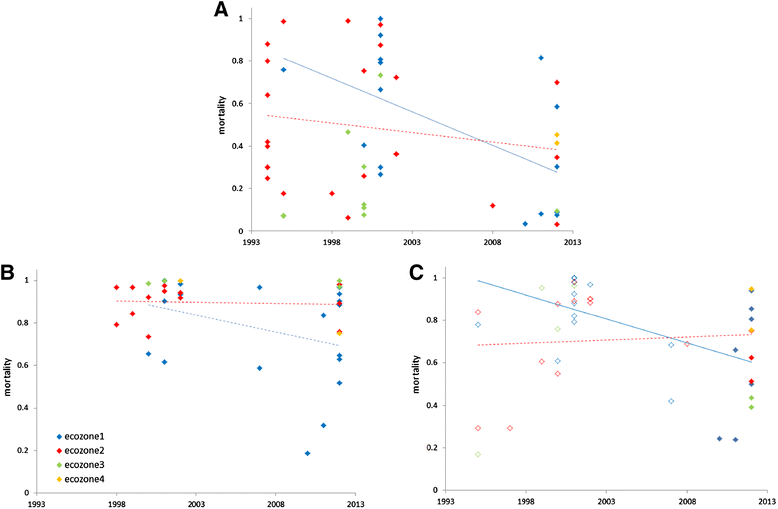
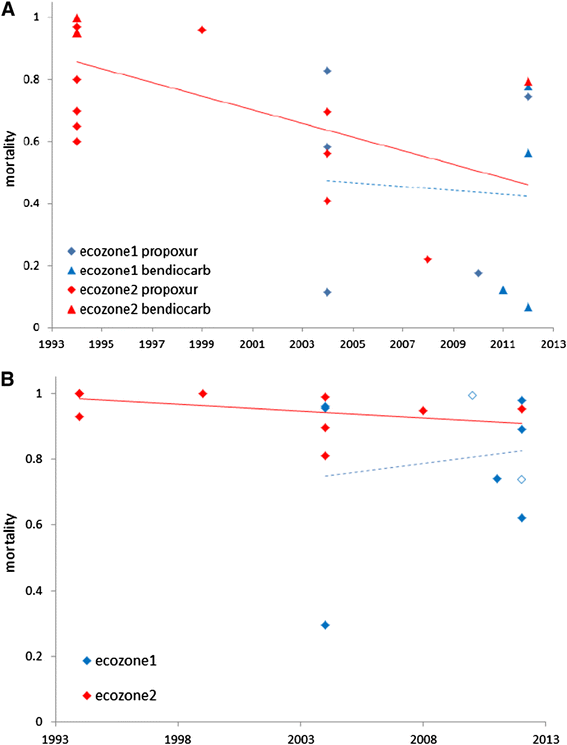
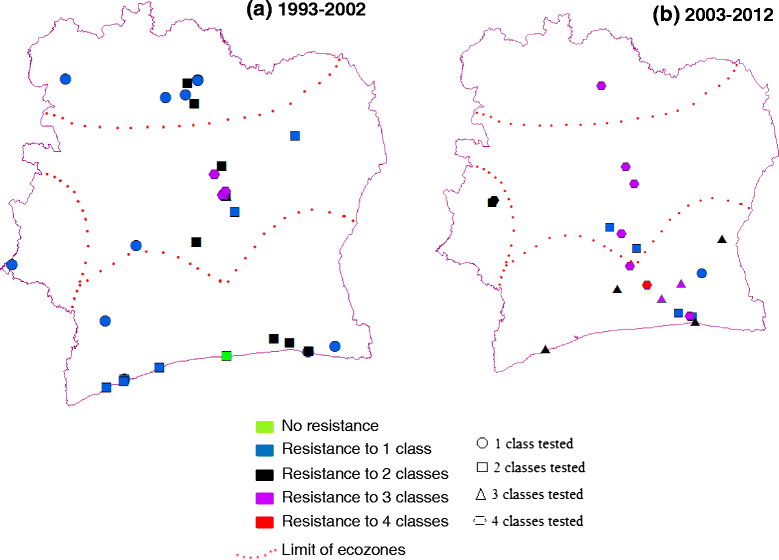
References
-
- WHO . World Malaria Report 2011. Geneva: World Health Organization; 2011.
-
- WHO . World Malaria Report 2013. Geneva: World Health Organization; 2013.
-
- WHO . Global Plan for Insecticide Resistance Management in Malaria Vectors. Geneva: World Health Organization; 2012.
Publication types
MeSH terms
Substances
LinkOut - more resources
Full Text Sources
Other Literature Sources
Miscellaneous

